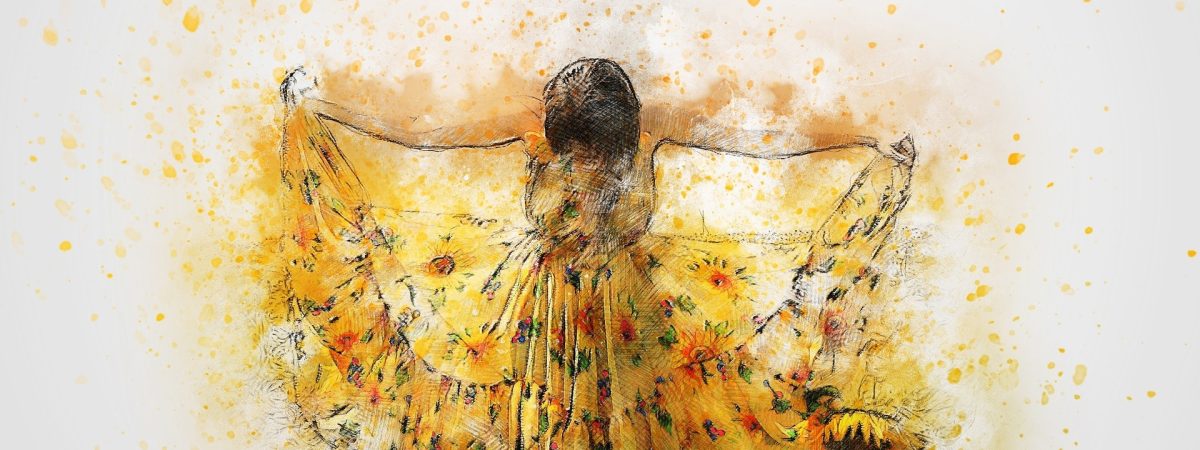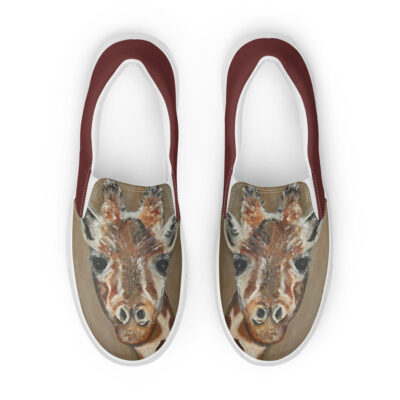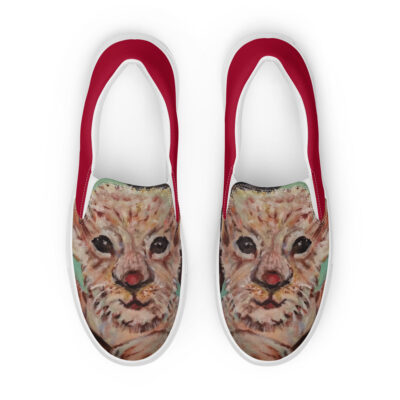We are all walking advertisements, whether we like it or not. We carry logos through life, showing off brand names with our shoes and phones, picking up branded tote bags from our favorite stores, or wearing hoodies with our favorite sports team names on them. There’s nothing wrong with supporting a brand, especially one that you believe in, but at Art For Your Cause, we’re interested in adorning ourselves with more than corporate messaging. In a world all too dominated by logos and fast fashion, we would much rather shine a light on wearable art.
What is wearable art?
Wearable art, sometimes referred to as artwear or art to wear, typically defines clothing and jewelry that is created for imaginative and aesthetic appreciation. That is, clothing designed specifically as expressive art, or otherwise fine art that has been repurposed as apparel.
Wearable art can refer to any piece of art that is worn by a model, often including art that would not pass for streetwear. These types of decorative pieces you might have seen at glamorous art celebrations such as the Met Gala. Wearable art can also refer to more simple, utilitarian wearable items, such as a tanktop with a print of your favorite painting on it, or a pair of boots splattered with a unique design. Much like with all art, the definition of artwear is a little bit relative, and we love that about it. If beauty is in the eye of the beholder, so is art.
In whatever form it takes, wearable art is something to celebrate, as it gives artists a chance to let their art sparkle and move through the world. When you see a wearable piece quite literally walking down the street, that piece tells an artist’s story, just as a painting or sculpture might.
The history of wearable art
In many ways, wearable art is as old as clothing itself. Humans have been ornamenting themselves with decorative shells and beads for well over 140,000 years. However, “wearable art” as we know it in the United States, came about in the 1960’s as part of a counterculture movement driven by creative spirit. Handmade and otherwise altered clothing was made popular during this time not only as a celebration of expression, but also as a form of protest. Artists worked with inventive materials and methods to create imaginative and beautifully colorful works of artwear. Since then, the wearable art movement has continued to thrive, as art to wear shows and festivals can still be seen all over the world.
Art prints have also become widely featured on clothing items as another medium of expression for fine artists. Similarly to the aforementioned artwear movement, some version of shirt printing has been around for thousands of years, with the earliest traces of screen printing dating back to 960 AD China and the Song Dynasty. More recently in the 1900’s and especially the 1960’s, t-shirt printing has become what we are familiar with today. This is when mass production of printed t-shirts began–with prints of logos, prints of band names, fashion prints, and art designs.
Fashion vs. art
One could make the argument that all fashion is art, and while certainly it can be, wearable art considers clothing that is first and foremost an artistic statement. While wearable art fits into the fashion world, artwear dares to stand out and away from the mainstream, to embrace styles that are unique, bold, and transformative.
Wearable art melds classic art mediums with aspects of fashion, using the human body as a moving aspect of the work. When a person wears an art piece, they automatically become a collaborator with the artist. That collaborator could be a model stomping down an art to wear runway ornamented in a whimsical design, or it could be you, dancing in an original printed dress that makes a bold statement.
Personal and unconforming, wearable art is not interested in what is trendy. Wearable art is not interested in logos or brands, either. Multi-million dollar clothing retailers can boast logos and fashion lines that celebrate the sale of what anyone and everyone will be wearing, but wearable art dares to be different. Wearable art favors that which is original over that which is everywhere. Wearable art shines.
When wearable art supports independent artists…and when it doesn’t
Art print t-shirts and other art apparel gives fine art an opportunity to live and breathe outside of a gallery. Artists can promote their work, share their art, and make a profit, to the enjoyment of art lovers everywhere. Unfortunately, not all wearable art prints actually benefit artists.
When printing a shirt with an art print on it can be as easy as copying and pasting an image from an artist’s website, the chances of finding stolen art prints online are all too high. That’s why it’s important to research the sources of art print apparel, to make sure that the store you’re buying from actually pays and credits artists.
It also helps to really take a note of what artist you’re supporting, rather than buying a random print without connecting to who created it. You probably wouldn’t buy a band’s t-shirt without looking up their music. Take the time to look into artists’ work, too. They could really benefit from your support!
Art For Your Cause – Your Source for Wearable Art
If you’re looking for a wearable art source that you can trust, that’s where we come in. At Art For Your Cause, we carefully curate apparel from independent artists, and then we make sure that 20% of every purchase goes to the artists. Another 10% also goes to a nonprofit of the artists’ choosing.
Our art products are not randomly selected, either. Art For Your Cause designers create custom-designed clothes and accessories for the artists that we work with, creating beautifully original artwear and lifting the voices of underrepresented creators. We know that we can do so much more with a shoe than a swoosh, and we can have a lot more fun with a backpack than a Jansport logo.
Check out our art to wear clothing line, where we make it easy for you to shine, all while shining a spotlight on artists and their work.











